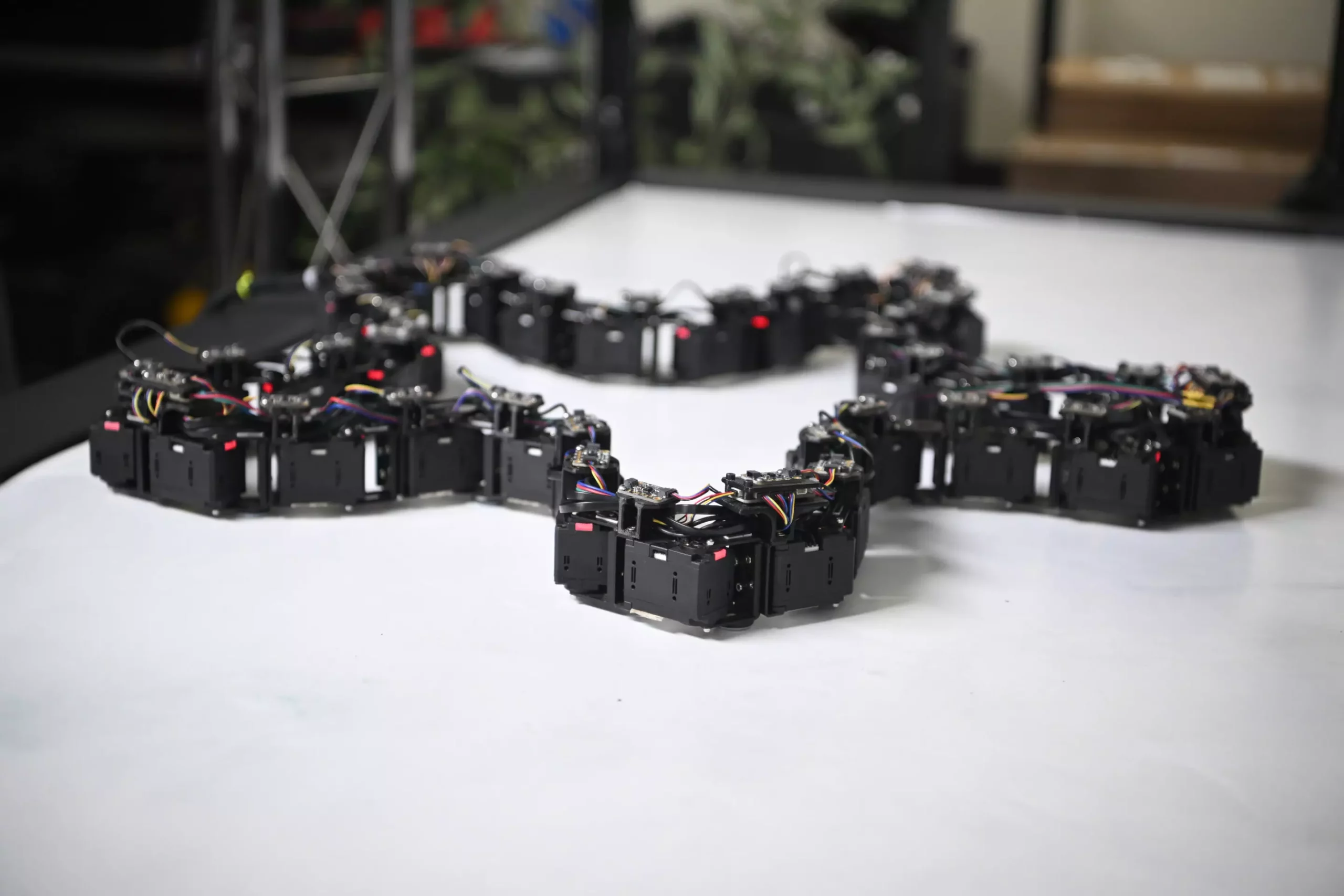The evolution of robotics has driven significant advancements in numerous fields, but the quest for autonomous functionality continues to challenge researchers. At West Virginia University (WVU), a team of roboticists is making strides in this arena with a groundbreaking project known as Loopy, an intriguing “multicellular robot.” This innovative device is crafted from an interconnected ring of individual robotic cells designed to shape themselves and respond organically to their environments. As they embark on this exploration, the researchers aim to enhance our understanding of autonomous behavior in robotics, potentially revolutionizing how robots interact with unpredictable real-world conditions.
The Concept Behind Loopy: Nature as a Blueprint
Loopy symbolizes a significant departure from traditional robotic systems. Instead of being statically designed, programmed, and controlled by humans, Loopy employs a model inspired by nature. The researchers draw parallels between the behaviors seen in ant swarms or the adaptive mechanisms of plant roots when encountering obstacles. In the case of Loopy, it embodies the principles of “swarm robotics,” where simple, decentralized units come together to exhibit complex and coordinated behaviors. This shift seeks to redefine agency in robotics, questioning the top-down approach where human designers dictate robotic action.
Lead researcher Yu Gu, a prominent professor at WVU, highlights that Loopy came about as a thought experiment designed to challenge the conventional mindset in robotics. The aim is not merely to program the robot for specific tasks but to design it so that it can learn and adapt through interactions with its environment. This focus on self-organization presents an intriguing perspective on robotic development, one that prioritizes adaptability and resilience over rigid programming.
Loopy is composed of 36 identical robotic cells that form a circular configuration, each capable of independently controlling its motion and processing sensory information related to its environment. This includes feedback on temperature, light, and other external stimuli. Such a decentralized setup fosters multi-dimensional responses as each cell reacts to the environment around it. The WVU researchers have developed a specialized testing facility equipped with advanced technology including overhead cameras and motion capture systems to evaluate Loopy’s performance under various controlled conditions.
The researchers focus on diverse scenarios involving different surface materials and objects to assess Loopy’s ability to delineate contaminated areas—a crucial function in applications like environmental clean-up following toxic spills. Notably, the ability to avoid centralized control allows Loopy to harness an emergent behavior that could surpass the limitations of traditional robotic strategies that require manual input for decision-making.
Insights Gained Through Unpredictable Outcomes
The investigation into Loopy’s capabilities is not purely linear; rather, it is characterized by surprise and spontaneity. Gu emphasizes that the unpredictable nature of their findings has proven to be a valuable source of insight, promoting further exploration and innovation. The overarching research question revolves around whether self-organized robotic solutions can deliver greater prior effectiveness and flexibility compared to pre-programmed behaviors.
Learning from Loopy’s organic responses, the researchers aim to ascertain how to harness these swarm behaviors for practical applications. The overarching goal is to identify conditions conducive to the emergence of complex behaviors within multicellular robots, potentially leading to exciting applications spanning from adaptive methods for leak sealing to interactive installations in art.
The shift to decentralized robotic systems as explored through Loopy reflects deeper philosophical considerations regarding the relationship between technology, nature, and design. Drawing upon concepts from permaculture, the researchers propose a design methodology where humans, robots, and their environments all contribute equally to the collaboration. Instead of dominating nature through rigid systems, this perspective emphasizes harnessing natural principles to achieve self-sufficiency and sustainability in robotic systems.
Influenced by research in plant intelligence, Gu employs biological analogies to illustrate decentralized information sharing among cells within Loopy. For instance, chemical signals in plants inform the coordinated growth of roots, suggesting a natural model for approaching robotic behaviors. Loopy encapsulates this dynamic by integrating environmental and intrinsic factors that shape its adaptive responses—a clear indicator of potential for future robotic applications.
As Loopy continues its experimental journey, it stands poised to challenge entrenched ideas about robotic autonomy and adaptability. By drawing from the natural world and embracing principles of swarm intelligence, the researchers at WVU have embarked on a path that could significantly redefine what robots can achieve. The future is bright for projects like Loopy that promise not only technological advancement but also a profound shift in how we think about the interaction between life and technology. As these explorations unfold, they encourage a collaborative ethos that may lead to transformative applications across various fields.


Leave a Reply